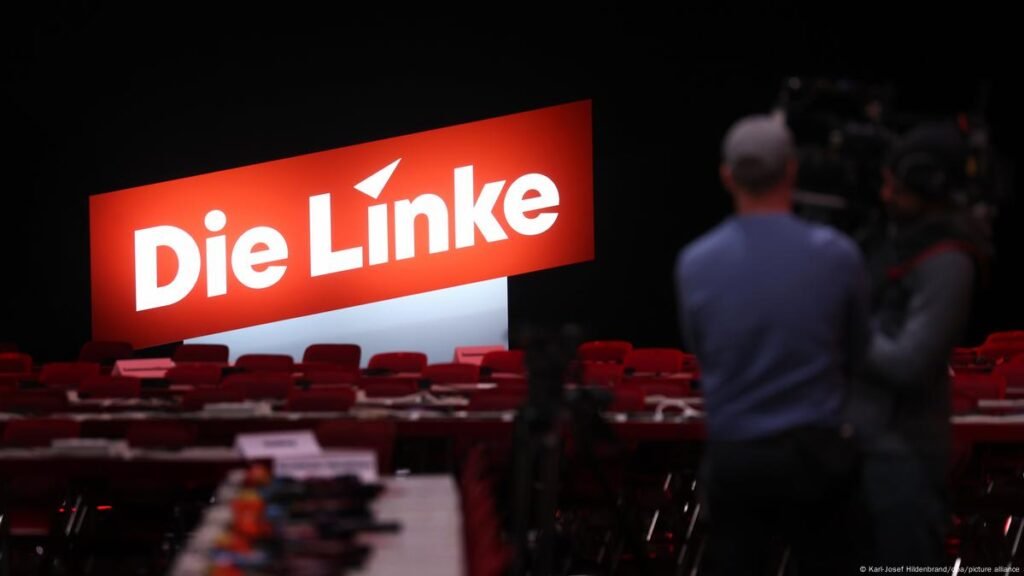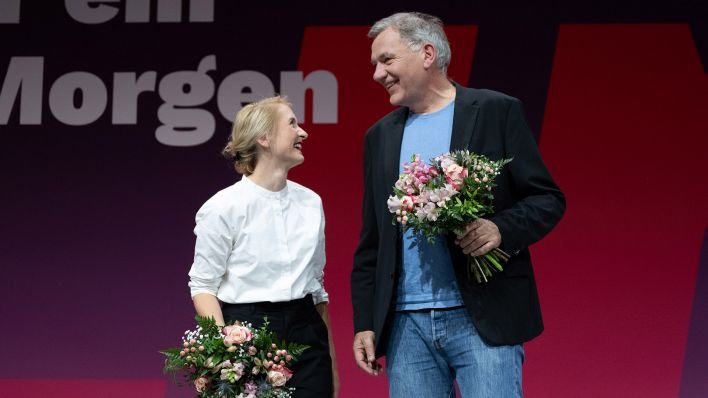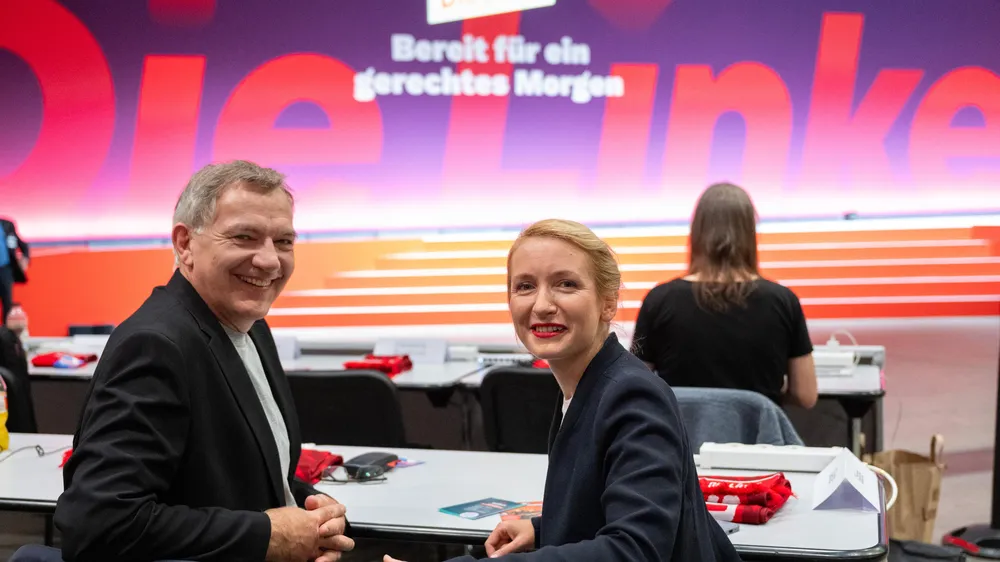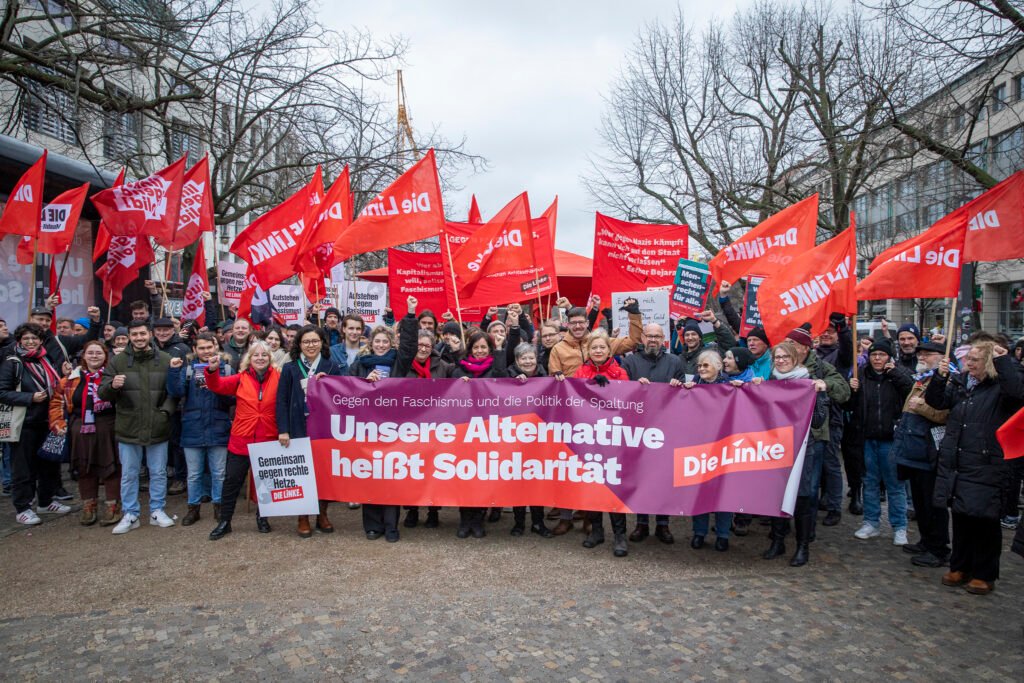
In a declaration resonating through the halls of Die Linke’s national congress in Halle, Saxony-Anhalt, members expressed, “There is hope.” This message underscores the party’s response to a year marked by setbacks, with polling figures dwindling between 3 and 4 percent, which threatens Die Linke’s ability to meet the Bundestag’s 5 percent threshold in the upcoming 2025 elections. The recent European Parliament election results mirrored this struggle, with Die Linke securing only 2.7 percent—half of its 2019 total.
Nevertheless, the congress convened in an atmosphere of renewed resolve and unity. Topics discussed were both challenging and urgent, encompassing Germany’s positions on the ongoing conflicts in Gaza, Lebanon, and Ukraine, as well as the party’s stance on universal basic income.

While previous congresses had been marked by internal conflict, the proceedings this year reflected greater harmony, which is largely attributed to a shift in leadership that has refocused Die Linke’s priorities.
Leadership Transition and the Road to Stabilization
The leadership transition has introduced a sense of optimism and direction to Die Linke. The resignations of former co-leaders Janine Wissler and Martin Schirdewan came after significant electoral losses and internal factionalism, issues that hindered the party from mounting a robust left-wing opposition to Chancellor Olaf Scholz’s coalition government. New co-leaders, Ines Schwerdtner and Jan van Aken, have undertaken the mission of stabilizing the party by reconnecting with its foundational goals.

Their platform emphasizes grassroots engagement and aligning policy with constituents’ needs, aiming to halt the decline in support, particularly in the party’s traditional stronghold of eastern Germany.
Revitalizing Grassroots Engagement: A Pre-Election Strategy
At the congress, Schwerdtner and van Aken presented an ambitious “pre-election campaign” to directly engage with the public. The goal is to connect with 100,000 households by February 2025, employing door-to-door canvassing to capture public concerns and reflect them in Die Linke’s platform for the 2025 elections.

This approach mirrors the recent electoral success of Nam Duy Nguyen in Leipzig, who leveraged direct voter engagement to secure his constituency despite challenging conditions. His victory has inspired Die Linke to apply similar grassroots tactics across the country.
The effectiveness of this approach, however, remains uncertain in western cities and rural areas of eastern Germany. In the east, Die Linke’s base is now contending with competition from the newly established BSW party, led by Sahra Wagenknecht, which has gained momentum with its anti-immigration stance and calls to end arms shipments to Ukraine. Schwerdtner and van Aken’s objective is to reaffirm Die Linke as the genuine left-wing alternative, addressing economic and social issues that resonate widely among the electorate.
Crafting a Broad-Based Platform for a Divided Electorate
One of Die Linke’s primary challenges is developing a platform that addresses Germany’s diverse regional priorities while maintaining a cohesive national stance. Urban voters, for example, may prioritize a rent cap in response to rising housing costs, whereas rural eastern communities are likely to focus on economic recovery and access to healthcare. Schwerdtner and van Aken recognize the necessity of adapting their message to meet these distinct needs while maintaining a unified vision for the party.
Retaining its traditional eastern base while appealing to potential western supporters presents a complex balancing act for Die Linke. Emphasizing the disparities in wages and living standards between eastern and western Germany may strengthen Die Linke’s position as the advocate for eastern interests. However, with eastern Germany representing only 15 percent of the national electorate, Die Linke must appeal to a broader demographic to achieve nationwide success.
Strategic Constituency Targets for Bundestag Representation
Given current polling levels, Die Linke is likely to rely on winning individual constituencies to secure Bundestag representation. High-profile members, such as Gregor Gysi, Bodo Ramelow, and Dietmar Bartsch, are expected to run in key districts in Berlin and Leipzig, where Die Linke retains considerable support. Victories in these constituencies could enable the party to retain its legislative presence even if it fails to reach the 5 percent threshold.
Schwerdtner and van Aken have also emphasized the importance of grounding the party in the lives of the working class. To this end, they have pledged to donate any income above the national average wage to a solidarity fund, reinforcing Die Linke’s commitment to economic equality and enhancing its credibility as the party of social justice.
Opportunities and Challenges in the Upcoming Election Cycle
Die Linke’s immediate objective is to perform strongly in Hamburg’s upcoming state election, where the party recently exceeded the 5 percent mark in the European elections. Success here could shift the narrative around Die Linke’s viability and reinvigorate its position as a contender against the right-wing populism of the AfD and Scholz’s centrist coalition.
In their initial press conference, Schwerdtner and van Aken underscored the necessity of returning to key social issues affecting everyday Germans, including housing affordability and wage equity. This approach, focused on economic and social justice, seeks to distinguish Die Linke as the premier advocate for marginalized communities and working-class interests.
Die Linke faces significant hurdles ahead of the 2025 election. The success of its grassroots engagement strategy and its ability to foster a unified platform will be crucial in determining whether the party can regain voter confidence and maintain relevance within German politics.


